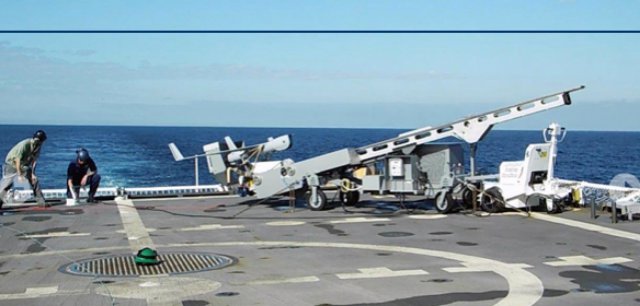
The U.S. Coast Guard is looking for a small unmanned aerial vehicle for use on its Legend-class national security cutters.
Under a draft request for proposals issued in the spring, the service will evaluate platforms with an eye toward issuing a full RFP by year’s end. A fiscal 2018 award would bring advanced intelligence, surveillance and reconnaissance capabilities along with search-and-rescue enhancements to nine vessels.
“As long as we have been talking about this class of ship, there has always been the expectation that there would be an unmanned system involved,” said Cmdr. Dan Broadhurst, unmanned aircraft systems division chief in the Coast Guard’s aviation capabilities office.
Up to now, money has been the main sticking point. The service has looked at multiple systems that, while capable, have clocked in at the “high tens of millions,” Broadhurst said. Now the service has tasked industry to come forward with a less expensive option.
In addition to the mainstay electro-optical and infrared systems that will form the core payload, the Coast Guard is especially keen to look at solutions that offer persistence, or the ability to execute missions for up to 12 hours at a stretch.
“There aren’t a lot of spare hands to launch and recover aircraft, so we need something that requires minimal manning and has a high degree of autonomy,” Broadhurst said.
The Coast Guard will be looking for a vendor that can not only supply the platform but also deliver the expertise needed to operate the unmanned craft, since UAV operations require a degree of technical proficiency not readily available across the service, said Jeffrey Bishop, program manager for small unmanned aircraft systems.
“At this point, the government as the operator is definitely off the table for this piece of the acquisition. We don’t have the people with the needed skill sets to operate these vehicles,” he said. The RFP is asking for “a holistic package, including the people, the antennas, the software. It is the full spectrum.”
This won’t be the Coast Guard’s first foray into UAV territory. A ScanEagle already operates from the cutter Stratton (photo). During one six-week, springtime deployment in the eastern Pacific Ocean, Scan Eagle flew 39 sorties for a total of 279 hours. In one operation, the aircraft delivered persistent surveillance for 22.7 flight hours in a 24-hour period.
Planners say a well-outfitted drone could leverage that kind of ISR success, but they aren’t being specific about what the sensor array may entail. There will certainly be electro-optical camera systems and infrared, or EO and IR, imaging systems, but after that they’re taking a wait-and-see approach, as new sensor technologies emerge.
“We think EO and IR are a smart and sensible way to start while we wait for industry to catch up with other, more capable payloads in the future,” Broadhurst said. “At the start it will be a flying camera with support teams to tell it where to go.”With added intelligence tools, this capability could expand. “You are talking about wide-sweeping sensors that can cover hundreds of miles at a time and tell you what is out there,” he said. “That’s the future state we seek.”
At the same time, he’s looking for sensors to get smaller and lighter, perhaps enough so that a UAV could support a radar platform, something not easily achieved with today’s technologies.
Looking further over the horizon, the Coast Guard would like its drone fleet eventually to incorporate a degree of autonomy, especially in the ability to detect other craft and steer clear of collisions.
“We would like a series of sensors that will allow the aircraft to fly on its own and avoid other aircraft on its own,” Broadhurst said. “These are going to be the keys to the kingdom with unmanned systems.”
Legend-class cutters perform a range of missions that might be enhanced with the addition of a UAV. They intercept suspect vessels, undertake homeland security and counterterrorism missions, patrol coastal waters, and take part in other defensive operations.
Source: C4ISRNET

I believe the Alpha 800 UAV Helicopter for hard work is an exceptional platform for this kind of ISTAR missions. With 150min of endurance, 3kg payload and 30km range; this VTOL unmanned system is very reliable and versatile for different conditions and circumstances.
http://www.alphaunmannedsystems.com
But it doesn’t begin to meet the time on station or persistence of vision needed for this mission requirement. They are talking 12 hours at a time with short turn around times between launches. And while the Alpha 800 can fly autonomous missions, landing autonomously on a rolling and pitching deck at sea is rather more challenging.